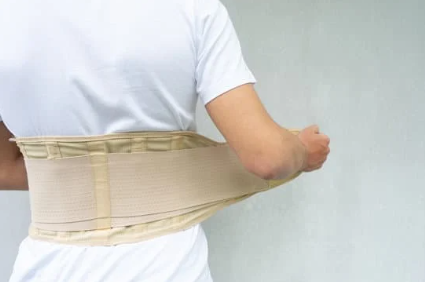"Should You Be Wearing A Brace?"

After sustaining an injury pain is often at its worst in those first few weeks following the initial incident. Nerves that innervate the damaged tissue are stimulated to tell the brain “Something is wrong” while your body begins undergoing reparative processes that trigger inflammation.
During this time, it’s best to give the injured body part as much rest as possible and put minimal load through the damaged tissue. It is during this early phase of healing where someone may consider crutches (to unweight an injury to the leg), icing and compression (to help reduce the swelling caused by inflammation), or perhaps even bracing.
There are many ways to approach treating the initial pain in those first few weeks. This article will further discuss when and how bracing should be used to help in the recovery process.
As mentioned, our bodies have a natural healing process that is triggered after an injury. While it’s true that pain is generally at its peak in the first few weeks, this process can also take months to complete (long after the acute pain has ended). Not only can it take months, but there are also many things that can go wrong to delay our healing – mostly by our own doing.
The number one mistake we see when treating someone with delayed healing is they either loaded the damaged tissue too quickly, or not enough. In our fast-paced world, not many people have the time or patience to properly treat their body after an injury. We are needed back at work, back to sports, or back to our daily routine NOW (at the expense of our body).
To understand why and when bracing is effective, it’s important to understand how pain affects our body. The mere presence of pain naturally inhibits the function of our muscles – meaning, our muscles cannot contract and relax properly when you have pain. This often results in atrophy of the muscles and a process called “fatty infiltration” where adipose issue infiltrates our muscles (making them less effective).
The purpose of a brace is to help provide external stability to an injured area AND unload the muscles. Often, when bracing is most helpful, the damage has been directed at connective tissue that STABILIZES or helps support the structure of a joint(s). This could be ligaments or even spinal discs. When those tissues are damaged, our muscles are needed to step in and help STABILIZE in addition to what they are already needed to do, which is create MOVEMENT. (Remember, these same muscles are already under duress due to the pain.) Our body can handle the extra work for a short period, but this isn’t a sustainable request and often leads to more problems.
Using an “over the counter” brace can be helpful in these situations. When used correctly, a simple brace can be exactly what you needed to give your muscles a much-needed break. While bracing can be helpful, it’s important to have a plan for weaning off your brace and not becoming dependent on it. The appropriate time to start this process is once your pain has eased and you have rebuilt your strength enough to not rely on the additional support.
A physical therapist can help you by assessing where you are at in your healing process, if a brace could help in your recovery, direct you to the type of brace that would help you most, and tailor a plan to help you successfully wean from your brace. If you have questions about whether a brace could help you, let’s chat! You can call our Metairie office at (504) 407-3477.
